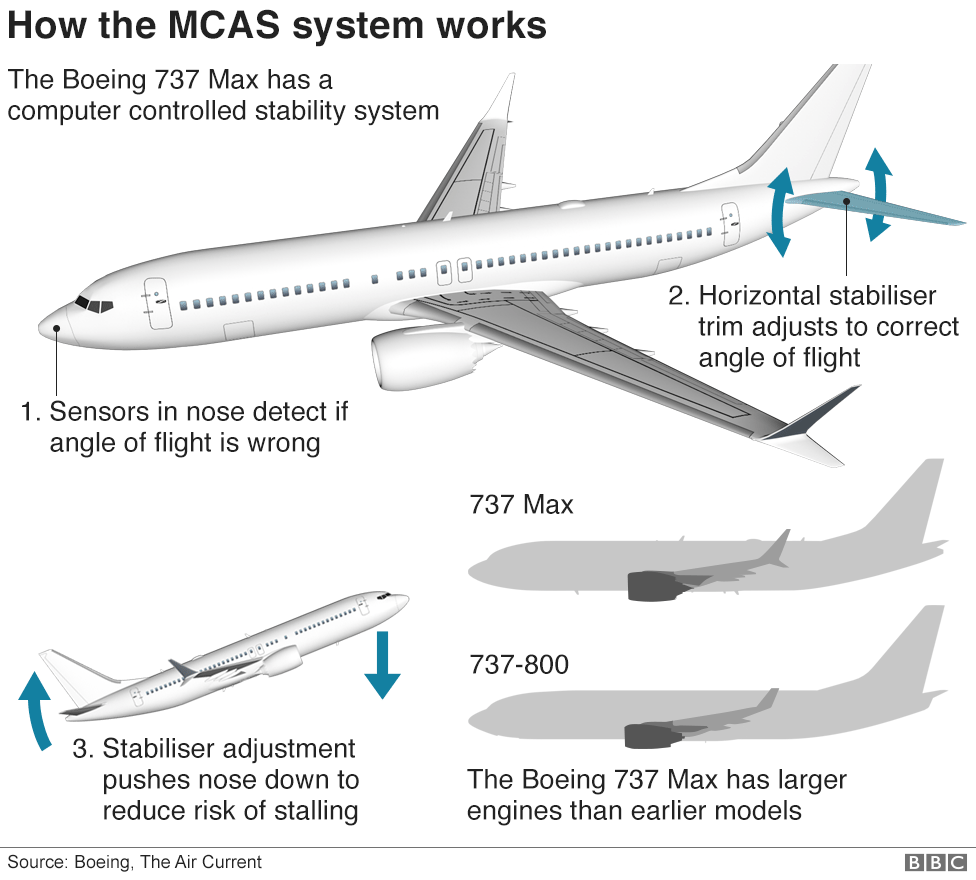

American Airlines pilots confronted Boeing about potential safety issues in its 737 Max planes in a meeting last November, US media are reporting.
They urged swift action after the first deadly 737 Max crash off Indonesia in October, according to audio obtained by CBS and the New York Times.
Boeing reportedly resisted their calls but promised a software fix.
But this had not been rolled out when an Ethiopian Airlines’ 737 Max crashed four months later, killing 157 people.
Currently 737 Max planes are grounded worldwide amid concerns that an anti-stall system may have contributed to both crashes.
Boeing is in the process of updating the system, known as MCAS, but denies it was solely to blame for the disasters.
In a closed door meeting with Boeing executives last November, which was secretly recorded, American Airlines’ pilots can be heard expressing concerns about the safety of MCAS.
Boeing vice-president Mike Sinnett told the pilots: “No one has yet to conclude that the sole cause of this was this function on the airplane.”
 Later in the meeting, he added: “The worst thing that can ever happen is a tragedy like this, and the even worse thing would be another one.”
Later in the meeting, he added: “The worst thing that can ever happen is a tragedy like this, and the even worse thing would be another one.”
The pilots also complained they had not been told about MCAS, which was new to the 737 Max, until after the Lion Air crash off Indonesia, which killed 189.
“These guys didn’t even know the damn system was on the airplane, nor did anybody else,” said Mike Michaelis, head of safety for the pilots’ union.
Boeing declined to comment on the November meeting, saying: “We are focused on working with pilots, airlines and global regulators to certify the updates on the Max and provide additional training and education to safely return the planes to flight.”
American Airlines said it was “confident that the impending software updates, along with the new training elements Boeing is developing for the Max, will lead to recertification of the aircraft soon.”



Following the Lion Air crash, Boeing issued additional instructions to pilots in case they faced a malfunction of the MCAS.
But in a letter obtained by the AFP news agency, Mr Michaelis said the instructions weren’t sufficient to help pilots in the event of malfunction.
Mr Michaelis also reportedly asked Boeing executives at the meeting to consider a software upgrade for the 737 MAX 8 – which probably would have required the planes be grounded for some time.
The executives said they didn’t want to rush out a fix, and said they expected pilots to be able to handle problems, according to the New York Times.
Investigators believe in both deadly crashes a faulty sensor triggered the plane’s MCAS anti-stall system, which repeatedly pushed the nose of the plane down.
Earlier this month Boeing admitted that it knew about another problem with its 737 Max jets a year before the fatal accidents, but took no action.
The firm said it had inadvertently made an alarm feature optional instead of standard, but insisted that this did not jeopardise flight safety.
The feature – an Angle of Attack (AOA) Disagree alert – was designed to let pilots know when two different sensors were reporting conflicting data.
The US Federal Aviation Administration said the issue was “low risk”, but said Boeing could have helped to “eliminate possible confusion” by letting it know earlier.
Boeing has been working on a software fix for its flight system and is hoping for quick approval from regulators.
But it is unclear if the planes will be back in the air before the end of the critical summer travel season. – bbc.com